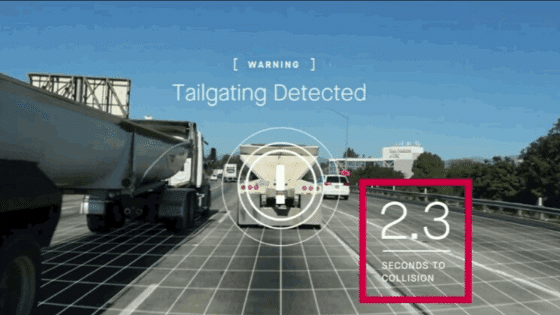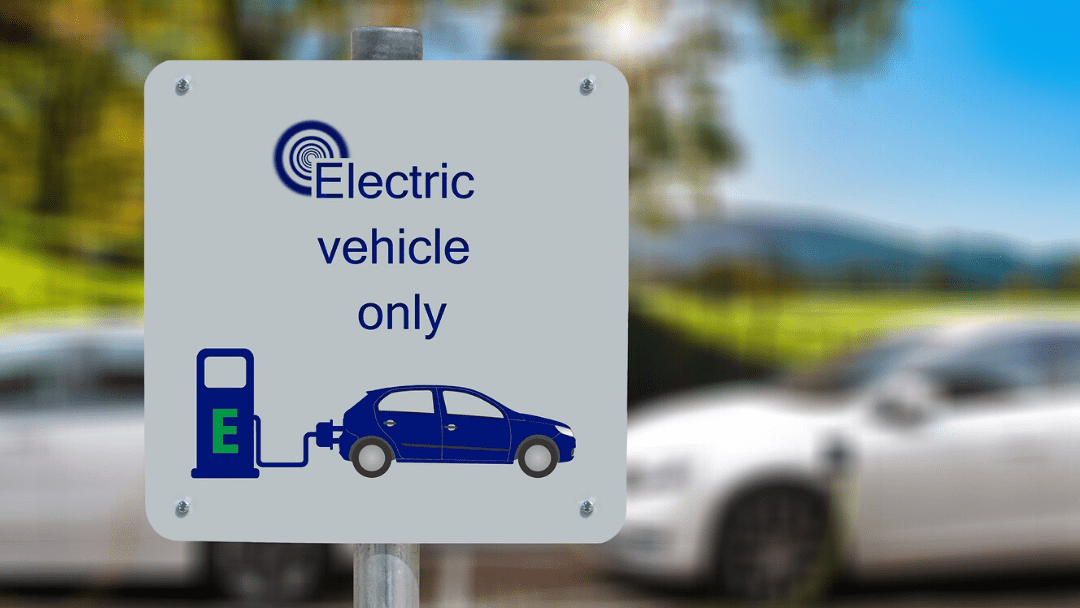The COVID-19 pandemic is having a drastic impact on people’s everyday life and businesses’ operations. Because of the “shelter-in-place” order and travel restrictions imposed by the government, the traffic volumes in cities across North America have dropped dramatically.
Although many people expect that emptier roads translate to safer driving environments, the data suggests that is not the case.
Statistics show that our roads have become more deadly since the beginning of the pandemic. In the United States, the fatality rate per mile driven went up by 14% compared to the same period last year. For commercial fleets, the mileage driven by commercial vehicles has declined by 20% since the pandemic; however, the amount of miles driven over the posted speed limit has increased by 17%, and the harsh cornering event has also increased by 15%.
A psychological belief called a false sense of security might explain why we see a surprise growth of careless and reckless driving behaviours during the pandemic. We will also explore options and solutions to crack down dangerous driving behaviours and enhance overall fleet operation safety.
Why Do We See an Increase In Dangerous Driving Behaviours?
If something gives you a false sense of security, it makes you believe that you are safe when you are not. That’s exactly what happened to roads during the pandemic. The emptier roads and reduced traffic prompted drivers to feel safer, resulting in increasing speeding and reckless driving activities. Drivers also carried the view that there will be fewer pedestrians and cyclists on the roads during the pandemic, so they believed that cars would get more road space, leading them to commit dangerous driving behaviours, such as failing to stop at stop signs.
Psychological Impact
The pandemic could be stressful, as it can cause fear, panic, anxiety in many people. This often leads to increased alcohol and drug consumption, contributing to increased aggressive driving behaviours on the roads. Commercial fleet drivers often experienced greater stress because of the increasing workloads caused by the growth of cargo transport and delivery activities during the pandemic.
Many businesses are operating a reduced fleet because of drivers’ absences due to isolation and sickness. That forces rest of the on-duty drivers to take additional tasks to cover the reduced workforces. Some might choose to commit dangerous behaviours such as speeding to finish all the tasks within business hours. The rise of risky behaviours during these times may put all road users in danger and lead to serious accidents resulting in injuries or deaths and unnecessary costs to businesses.
Impact Of Distracted Driving
Distracted driving has often been described as one of the biggest challenges for modern drivers. Almost 80% of road accidents have seen distracted driving as a contributing factor. Hands-free devices have become a popular tool among fleet drivers, as many believe it will reduce the risks of taking a call during driving. However, even drivers’ hands remain on the steering wheel while taking a call through hands-free devices, their mind and concentration might be distracted by talking. This creates a hidden risk and may negatively impact the drivers’ response time to an unexpected road situation.
Impact Of Reduced Training
The reduced amount of face-to-face fleet safety training might be another reason why some drivers become less vigilant during driving. Routine safety training is an essential pillar of establishing and maintaining a strong and positive workplace safety culture. Many businesses and workplaces have decided to postpone or reduce these kinds of face-to-face safety training programs due to the growing concerns of virus transmission during personal interactions. Lack of road safety education sessions during the pandemic has let drivers guard down, and some chose to carry out aggressive driving behaviours on the roads.
Deadly Consequences Of Careless Driving
Dangerous driving and failing to obey road signs put the safety of all road users at risk. It could lead to severe consequences, such as fatal accidents and unintentional injuries. Drivers and businesses might face huge fines, penalties, or lawsuits if they are involved in road accidents and collisions. Depending on the severity of the accidents, drivers might be charged for dangerous driving and received license suspensions and a criminal record. Businesses might also bear unnecessary costs and expenses in recovering assets damage, paying for additional maintenance costs, suffering increased insurance premiums.
The social costs and damages made to brand reputation are two factors that often are neglected when evaluating the cost of a road accident. Any injuries or deaths resulting from the road accident place additional expenses and burdens on the local healthcare system, transportation networks, and legal system.
For individuals, loss of life and life quality, loss of output due to temporary incapacitation should also be quantified in monetary values when calculating accidents’ costs. Accidents could also severely harm the brand’s reputation in the industry and have a long-term adverse impact on the businesses’ operations, revenues, and financial stability. Businesses need a spotless fleet safety record to win customers’ trust and differentiate themselves – so maintaining a high fleet safety standard is a “must” for fleets of any size.
Technologies That Can Make A Difference In Fleet Safety Management
The rising level of careless driving behaviours among fleet drivers during the pandemic has raised the alarm for fleet managers and safety managers. A growing number of fleet managers are eyeing telematics solutions to safeguard the fleet’s operations. Telematics solutions offer a complete safety package utilizing various technologies, including sensing, tracking, and recording technologies, to provide preventive measures that protect workers and assets safety.
Driver Distraction Cameras: Keep Your Drivers Focused
Driver distraction cameras have become very useful and cost-effective telematics tools adopted by businesses to crack down distracted driving among drivers. These cameras utilizes artificial intelligence and facial recognition technology to detect if drivers have been distracted. By tracking and analyzing drivers’ eyes, face, mouth, and head movement, the system can tell whether drivers’ attention remains focused on the road. An audible alert will be sent out to warn drivers if it notices any forms of distracted driving. The alert will also trigger the video camera recording, so fleet managers can later review footage and learn what happened on the roads.
Not only can driver distraction cameras address distracted driving, the device also helps to detect driver fatigue. When the camera detects that the driver’s eyes blink too slow or their head starts to lower down, it will trigger an audible alert to warn drivers. The camera works in all kinds of complex environments, including dark settings, offering ultimate protection to drivers, no matter day or night. The hassle-free device installation process means that fleet managers can immediately see a reduction in driving distraction after the implementation.
Online Scoring and Training Platforms: Powerful Data Collection and Performance Monitoring With All The Information You Need
To further quantify drivers’ performance and give fleet managers a better overview of drivers’ driving behaviours, online scoring and training platforms like ZenduLearn and ZenScore are leveraged. ZenduLearn is an online training solution which allows for digital training classes to be assigned to drivers, ensuring that social distance requirements are kept.
ZenScore is a highly interactive dashboard and driver scoring system that offers a comprehensive and highly customizable overview of the fleet’s status, performance, and safety. One of the top features is giving fleet managers the ability to assess drivers’ performance and driving behaviours. Even allowing managers to assign new courses to improve skills by also leveraging ZenduLearn. ZenScore is used by giving every driver a safety score based on their previous trip performance. Through evaluating these scores, fleet managers can quickly identify high-risk drivers that often commit dangerous driving behaviours, such as harsh braking, speeding, hard acceleration, and hard cornering.
Fleet managers or safety managers can then develop appropriate training sessions to coach these high-risk drivers and correct their driving habits. Fleet managers can also reward drivers who receive a high safety score and create safety driving contests to motivate the rest of the drivers to develop and practice good driving habits.
360 Telematics Integration Designed For Safety
You might now be wondering how we generate these drivers’ safety scores. These scores are calculated based on several important metrics measured by other vehicles onboard sensors and tracking devices. The Geotab GO9 is a next-generation fleet tracking device that can detect speeding and HOS (Hours of Service) violations. The high connectivity of telematics products enables the system to record a speeding or violations, which will then be automatically synchronized and reflected on the ZenScore dashboard. The seamless integration and connection between telematics devices powered by IoT (Internet of Things) have made all these things possible at the backstage automatically with no additional human work needed.
At GoFleet, we offered a complete fleet safety package that is highly customizable to fit your businesses’ core needs and give you the information you value the most. Road safety should not be overlooked on any occasion. Though the pandemic has created great uncertainty for any business operations, fleet managers and drivers should continue to remain on high alert and practice the highest safety standard across the operations.
A false sense of security can undermine the entire fleet’s safety and other road users’ safety. Investing in an extra layer of safety protection could significantly elevate your fleet’s overall safety standards and protect drivers and your valuable assets. Telematics is the leading solution that could transform and digitalize safety management at businesses and fleets of any size. Contact us to speak with an industry-specific consultant who knows exactly how to customize telematic solutions to elevate your fleet’s safety record.












